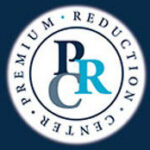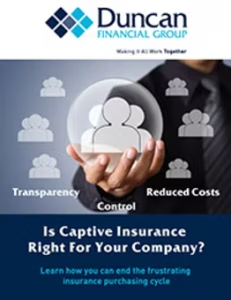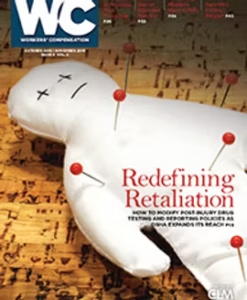Understanding Captive Insurance
Each section explores captives, starting with the basics through successful implementation.
Introduction to Captives
When you continually pay more premiums to insurance companies than they pay out on your behalf, where does your excess money go?
Your efforts and focus on safety, the very attributes that have made you attractive to insurance companies, are allowing those same insurance companies to make an underwriting profit off your business. In essence, that underwriting profit is excess premiums, and it allows the insurance company to take on the risks and pay the claims of businesses that are not as focused as you are. Plus, your excess premiums go to benefit their shareholders in the form of insurance company profits
Then you realize your situation has gotten worse when the insurance industry experiences a "hard market," a time period when the insurance industry seeks to increase overall rates due to inadequately charging companies with poor claims experience enough premium. When better-performing companies like yours cannot offset the losses of poorer-performing businesses, the insurance companies still need to be profitable for their shareholders, so they must increase everyone's rates - including yours!
In an effort to reduce their Total Cost of Risk and gain more control over their own situation, you can see why businesses continue to turn to alternative risk financing markets, particularly captives. Participating in a captive gives you the opportunity to be rewarded by receiving the underwriting profit of your efforts, as well as any potential investment income. Rather than an insurance company and its shareholders receiving the benefits of your better results, you do!
Captives are not a new concept; they have been around for over 100 years. A captive insurance company is a separate entity formed specifically to manage the risks of its parent company. Single Parent Captives, where a captive is formed to protect its owner/parent company, have long been used by Fortune 500 companies to manage their diverse risk portfolios; but the use of captives did not stop there. Liked minded business owners grouped together to form their own group captives so that they too could benefit from the same beneficial advantages of a captive insurance program.
From around 1,000 captives in 1980, there are now over 7,000, according to a September 2014 report by Conning Research & Consulting. In fact, there has been more than a 35% increase in captives in the past 10 years as business owners become more sophisticated and demand better use of their capital. As a result, more and more businesses have turned to captives. And with that growth, the availability of middle market companies to access such programs has grown immensely.
Is it time for you to break that costly cycle?
If you are paying over $100,000 annually in workers’ compensation, general liability, and auto insurance premiums combined, you can break this costly cycle and gain more control over your insurance costs.
Alternative risk financing is when a business does not purchase traditional guaranteed cost insurance policies, but instead purchases insurance where they take on some risk to get potential rewards. For clarification, there is more insurance premiums invested by businesses in the alternative risk financing market than you realize, with the use of Group Captives being the most popular of the alternative risk financing programs being used.
“Over 90 percent of Fortune 1000 companies and many successful mid-market companies have captives,” stated Lance McNeel, Capstone’s Director of Insurance. “An estimated 50 percent of all property and casualty premiums are written through captives.” If you remain in the traditional insurance world, you will shortly be in the minority, and be at a competitive disadvantage as compared to those that are insured in the captive world.
From this website, you will learn more about captives and the benefits of them. Just one of many benefits you learn about is how captives will provide you with the ability to have your premiums determined by the quality and results of your operations versus the overall average rates used in the insurance industry uses. At this point, you might already be asking yourself, is a captive right for me?
Captives: What You Need to Know
Captive Basics
Benefits of Group Captives
Types of Captives
Is a Group Captive Right for Me?
How to Join a Group Captive
831(b) Enterprise Captives
Employee Health Insurance Captives
Captive Insurance Services
Your Single Destination for Captive Solutions
“Selling” you on using insurance captives is not what we want to do, as captives are not for everyone. Only businesses that understand and can benefit from using insurance captives should pursue using captives to finance their risks. Providing the guidance, tools, support, resources and education needed to help achieve success is the focus of the Duncan Financial Group.
In addition to guiding and supporting you through the entire captive process, Duncan provides initial and ongoing workshops and webinars on the types and structures of captive, how they work, how to gauge success, benchmarking results and key performance indicators, understanding captive financials, as well as keeping you abreast of current events that impact the captive insurance world. Having a deep understanding of the captive success factors and challenges you may face is key to improving your captive success.
Although reducing insurance costs through the lower cost structures of captives is attractive to business owners, it is important for a business owner to know if a captive is the right option for them. We will perform an analysis of your safety and risk management practices, as well as a claims analysis, to determine if the time is right for you to look at a captive. We can also determine if a group or association insurance captive, or your own single parent captive, makes the most financial sense for you to pursue.
Preliminary Financial Analysis
Entering a captive can be financially advantageous, but there is an initial cost of starting your own captive, or entering a group captive. We will review those costs as well as assess the impact of the collateral requirements on your financial picture. This includes potential impacts on cash flow, loans, or lines of credits. Our accounting and CPA professionals can review your current financials, and financial situation, and help advise you in your decision, and even make recommendations to help structure your financials before submitting for captive review.
Preparation of Captive Submission
Qualifying for a captive and establishing your premiums and reinsurance costs requires a much more extensive compilation of data about your business, your operational and claims history, and financial picture. We will walk you through this process and help gather all of the required data; we will then compile it into formats that the captive managers will want so that they can analyze your submission to join their captive.
Captive Manager/Program Selection
With over 7,000 captives, over 1,000 captive managers, and hundreds of group captives, finding or creating the right captive program and choosing the right captive manager is important for both the protection and financial success of your business and your captive. In addition to our own captive domiciled facility and captive manager, we have access to dozens of captive programs and managers that can best meet your needs.
Consultation on Captive Ownership
Understanding who should own your captive can impact who has the financial responsibility and benefit of the captive, such as receiving dividends from the captive and their taxable impact. Understanding your goals, whether business, individual, or even your estate, will need to be considered when determining who should own your captive or captive shares. Our captive experts, and accounting and CPA professionals can advise you as you make this important decision.
Ultimately, your claims will determine the success of your captive performance. Helping to minimize the cost of your claims will be crucial to reducing how much is paid out and increasing the profitability of your program. Our deep team of over a dozen seasoned claims professionals will be your advocate and work to make sure any claim is managed, settled, or even denied, in your best interest.
Safety & Risk Management
You already have a significant focus on safety and quality, otherwise you would probably not be interested in insurance captives. However, identifying risks in your business, and determining the best ways to reduce or eliminate those risks will help achieve greater captive success. Our team of over a dozen Certified Safety Professionals, Certified Risk Managers, and Certified WorkComp Advisors can help your team build and implement custom risk management programs to reduce your total cost of risk and improve your captive profitability.
Human Resources
The success of any business starts with its employees. Hiring, managing, training, and retaining the best employees are obviously critical. Our deep team of human resource specialists, including a human resources attorney, is there to support your team so they have the right information, make the right decisions, and implement the best programs.
Benchmarking Captive Performance
Just because you are in a captive, does not mean that you do not need to worry about how things are going, how things are performing. Assessing how well your captive is performing, especially in a group or association captive is critical. We will work with you to assess how well your captive cost structure is performing against the traditional marketplace, help you to understand and determine if there other members of your captive that are overly negatively affecting your results, and if the captive cost structure is appropriate.
Benchmarking Your Business’ Performance
As the cost of your captive insurance program is directly affective by your claim costs, it is important to manage your captive, not by the end results (your claims) but by a complete matrix of criteria that are leading indicators of potential problems that could lead to claims. Criteria such as injury frequency, near misses, rejected product counts, turnover, peer observation reports, and out of service vehicles, are just a few of the leading indicators with point to potential larger issues. Our deep risk management and safety professionals will help you to build the matrix of criteria to benchmark yourself against, as well as structure the means to test and measure them.
Even with insurance captives, you buy insurance to pay your unexpected claims. Since it’s common for business owners to mix business assets, property, vehicles and investments with personal ones, oversights often occur under traditional insurance arrangements. In addition to our Risk Assessment helping you to become a safer, more productive and profitable company, the assessment provides us with unique insight into your operations, and both your business and personal world. Through our Coverage Analysis, we will make sure that your business and personal insurance protection meets your needs.
Captive Audits
If you are already in a single parent captive, or group or association captive, we can perform a deep analysis of your captive and your overall safety performance. Using benchmarks, we can help you determine if the captive is actually benefiting you or not, and if there are other factors that need to be addressed to help you to improve your insurance captive performance.
Turning Premiums Into Profits: How Captive Insurance Can Revolutionize Your Business
Get A FREE Copy of this Amazon #1 Best Seller

As a business owner, or business leader, when you look at the amount of money you have just handed over to the insurance companies and received very little, or nothing in return, and the exhausting amount of time you have spent trying to obtain bids or quotes to reduce the cost of your insurance program, only to fall short of the real results you wanted to occur, how can you not feel frustrated… or like you are going insane? And why do they keep doing the same things year after year when it comes to your insurance programs? After all, isn’t that the very definition of insanity; doing the same thing over and over and expecting a different outcome?
But that high-priced insanity stops here.
In his latest book, David Leng shows you how to break this costly insurance cycle and gain more control over your insurance program while simultaneously building equity that will help you and your business, rather than it being pocketed by the insurance company and its shareholders. You will see how businesses that are paying over $100,000 annually in insurance premium can benefit from Alternative Risk Financing, where a business does not purchase traditional guaranteed cost insurance policies, but instead purchases insurance where they take on some risk to get potential rewards. With a 30-year track record in advising employers on how to save substantial money in their premiums, David spells out clearly and precisely why the use of Captives has become the most popular of the alternative risk financing programs being used today. And why it just might be the solution your company needs to increase both its profitability and its equity.
Don't Just Take Our Word for It! Real Businesses, Real Results
Get Your Custom Risk Management Plan Today
Simply fill out the form and our team of experts will reach out to you to discuss your personalized risk management strategy.


















